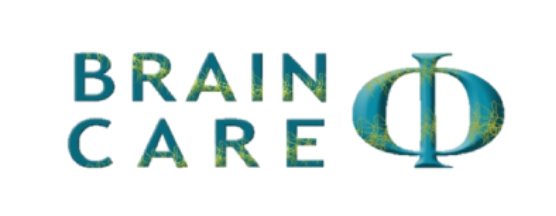Neurofeedback for Depression
While we all experience natural fluctuations in our mood, persistent or intense symptoms of depression can have a significant impact on your everyday life. Extremely low or depressed mood, loss of pleasure or interest in almost all activities, and symptoms of reduced arousal such as low energy of fatigue are just a start to the long list of symptoms depression can result in.
Traditional interventions for depression such as psychotherapy, counselling, or medication may only offer so much to reduce or eliminate your symptoms. These symptoms may even continue to persist or intensify despite ongoing therapy. But what’s the alternative? You do everything you but are yet to see any progress.
EEG, QEEG and ERP’s provide specific and detailed insights into the underlying patterns of your brain that contribute to these debilitating symptoms. Neurofeedback offers a safe and non-invasive alternative to relieving depression with lasting results. So what does a brain with depression look like? What is neurofeedback? How can it help with depression?
What do the Brain Waves of someone with depression look like?
While an EEG, QEEG or ERP’s alone are not able to diagnose depression, they do provide great insight into brain areas that may be contributing to the most concerning symptoms. QEEG can quantify the patterns of your brain that may have become ‘stuck.’ This may vary from person to person and also reveal findings more closely aligned to other disorders, such as anxiety or trauma.
Because depression can affect everyone differently, this is a great advantage of QEEG and ERP’s to find the specific underlying patterns to your symptoms. Symptoms commonly affect our emotions (or affect), thought patterns and executive function (cognitive), or even physically (sleep or eating patterns and habits, energy levels). Because QEEG and ERP’s can identify this specific information, it can more accurately inform the best course of action for therapy. Commonly reported QEEG findings for depression include:
Excessive Frontal Alpha Intensity:
This refers to a dominance of alpha brain rhythms in the frontal lobes. Alpha rhythms are the brains idling rhythm. This means that when alpha waves are present, the brain is conscious but not actively processing information. When too much alpha is present in the frontal lobes, it can make it more difficult for a person to perform the functions of these areas.
The frontal lobe is involved in a range of processes such as emotional regulation, planning, organization, motivation, goal setting, expressive language, motor planning and more. So when this area is disengaged, or ‘harder to get going’ it can look like depressive symptoms of low mood, negative affect, lack of motivation, fatigue, slowed movements, difficulty making decisions, and reduced ability to regulate emotions.
These symptoms can also present when dominant alpha rhythms are too slow (information processed slower) or there is too much theta rhythm activity seen over frontal areas.
Frontal Alpha Asymmetry:
Frontal Alpha asymmetry refers to excess alpha and reduced activation of one side of the prefrontal cortex. Typically this is the left hemisphere. The left prefrontal cortex is typically activated more in response to positive emotions while the right hemisphere is activated more in response to negative emotions.
When our left hemisphere is more difficult to engage, we have difficulty perceiving our environment as positive and seeing opportunity to seek reward. As a result, it is common for us to withdraw from these environments. The relative dominance of our right prefrontal cortex can also lead to us experiencing more negative emotions and therefore more depressive symptoms. Reduced activation of the left prefrontal lobes may also reduce approach behaviours, organization, motivation, planning, and goal orientated behaviours, all common symptoms of depression.
QEEG assessments identify whether this imbalance exists. Neurofeedback can then correct this imbalance by reducing the excess alpha brain waves in the left hemisphere for activating this area and the above functions to reduce symptoms of depression. tDCS can also do this by eliciting a small electrical current and activate the target brain area for improved mood and functioning.
Sleep and Vigilance Disturbances:
A common symptom of depression is fatigue, sleep disturbances, and overall reduced arousal. EEG is very good at identifying arousal levels and how awake and alert you are or whether you are drowsy or even asleep (even when you think you might not be).
If these findings are identified in your EEG in line with reports of sleep issues and excess fatigue, a Neurofeedback protocol may be implemented in conjunction with other approaches to improve your sleep. Neurofeedback has been implemented reliable to improve quality of sleep, sleep onset, and sleep maintenance. Sleep quality is an extremely important component of mental health and can be a significant factor in improving symptoms of depression.
Associated QEEG Findings.
Quite often clients who present with depression also experience other related mental health issues such as:
- Anxiety
- Trauma or PTSD
- ADHD
- OCD
- Social engagement difficulties.
The QEEG can recognise deviations in brain function associated with these and may be contributing to your presentation of depression more than you would suspect. Being able to identify these specific issues can play a very important role in relieving symptoms of depression and gaining control over your mood, thoughts, behaviour and life.
Depression can present in many different ways both in how we feel, act and think and also how our brain is functioning. If you or someone you love is experiencing depression, QEEG/ERP’s can offer a great understanding into your brain function while neurofeedback can help resolve the neural underpinnings.
To book in your initial consultation and explore biofeedback and neuromodulation options for your mental health, contact us today.


